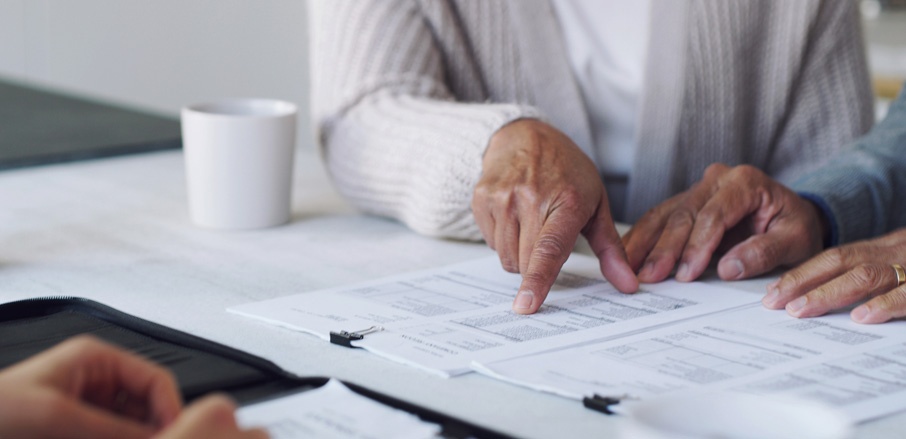
1 April 2020 — articles
3rd stimulus package 1 April

stimulus package 3 – jobkeeper payment explained
The following relates to the third stimulus package announced by the Federal
Government on 30th March and relates directly to the JobKeeper payment
Last week, the Federal Government enacted a range of economic measures totalling $189 billion to support Australians during the Covid-19 crisis.
On the 30th March, the Prime Minister and the Treasurer announced that the Government will provide a wage subsidy that will benefit more than six million workers. The $130 billion JobKeeper programme will provide a flat payment of $1,500 per fortnight through employers and will be open to eligible businesses that receive a significant financial hit caused by the coronavirus.
The payment will provide the equivalent of around 70 per cent of the national median wage and will ensure eligible employers and employees stay connected while some businesses move into hibernation.
You can register your intention to apply for the JobKeeper payment by clicking here
employee obligations
Employees will receive a notification from their employer that they are receiving the JobKeeper Payment. The majority of employees will need to do nothing further.
Employees in the following circumstances will have additional obligations.
- Employees that have multiple employers must notify the employer that is their primary employer.
- Employees that are not Australian citizens must notify their employer of their visa status, to allow their employer to determine if they are an eligible employee.
- Employees that are currently in receipt of an income support payment must notify Services Australia of their new income.
background on jobkeeper payment for employees
Under the JobKeeper Payment, businesses impacted by the Coronavirus will be able to access a wage subsidy from the Government to continue paying their employees. Affected employers will be able to claim a fortnightly payment of $1,500 per eligible employee from 30 March 2020, for a maximum of 6 months.
Eligible employees will receive a minimum of $1,500 per fortnight, before tax. It will be up to the employer if they want to pay superannuation on any additional wage paid because of JobKeeper Payments.
Eligible employees include Australian citizens, the holder of a permanent visa, a Protected Special Category Visa Holder, a non-protected Special Category Visa Holder who has been residing continually in Australia for 10 years or more, or a Special Category (Subclass 444) Visa Holder.
Full time and part time employees, including stood down employees, would be eligible for the JobKeeper Payment. Where a casual employee has been with their employer for at least the previous 12 months they will also be eligible for the Payment.
Employees will be able to receive this payment in a number of different ways.
- If you ordinarily receive $1,500 or more in income per fortnight before tax, you will continue to receive your regular income according to the prevailing workplace arrangements. The JobKeeper Payments will subsidise part or all of your income.
- If you ordinarily receive less than $1,500 in income per fortnight before tax, your employer must pay you, at a minimum, $1,500 per fortnight, before tax.
- If you have been stood down, your employer must pay you, at a minimum, $1,500 per fortnight, before tax.
- If you were employed on 1 March 2020, subsequently ceased employment and then were re-engaged by the same eligible employer, you will receive, at a minimum, $1,500 per fortnight, before tax.
Your employer will notify you if they are claiming the JobKeeper Payment on your behalf
employer obligations
To receive the JobKeeper Payment, employers must:
- Register an intention to apply on the ATO website and assess that they have or will experience the required turnover decline.
- Provide information to the ATO on eligible employees. This includes information on the number of eligible employees engaged as at 1 March 2020 and those currently employed by the business (including those stood down or rehired). For most businesses, the ATO will use Single Touch Payroll data to pre-populate the employee details for the business.
- Ensure that each eligible employee receives at least $1,500 per fortnight (before tax).
- For employees that were already receiving this amount from the employer then their income will not change. For employees that have been receiving less than this amount, the employer will need to top up the payment to the employee up to $1,500, before tax. And for those employees earning more than this amount, the employer is able to provide them with a top-up.
- Notify all eligible employees that they are receiving the JobKeeper Payment.
- Continue to provide information to the ATO on a monthly basis, including the number of eligible employees employed by the business.
background on jobkeeper payment
Under the JobKeeper Payment, businesses impacted by the Coronavirus will be able to access a subsidy from the Government to continue paying their employees. Affected employers will be able to claim a fortnightly payment of $1,500 per eligible employee from 30 March 2020, for a maximum period of 6 months.
Eligible employers
Employers will be eligible for the subsidy if:
- their business has a turnover of less than $1 billion and their turnover will be reduced by more than 30 per cent relative to a comparable period a year ago (of at least a month); or
- their business has a turnover of $1 billion or more and their turnover will be reduced by more than 50 per cent relative to a comparable period a year ago (of at least a month); and
- the business is not subject to the Major Bank Levy.
The employer must have been in an employment relationship with eligible employees as at 1 March 2020 and confirm that each eligible employee is currently engaged in order to receive JobKeeper Payments.
Not-for-profit entities (including charities) and self-employed individuals (businesses without employees) that meet the turnover tests that apply for businesses are eligible to apply for JobKeeper Payments.
Eligible employees
Eligible employees are employees who:
- are currently employed by the eligible employer (including those stood down or re-hired);
- were employed by the employer at 1 March 2020;
- are full-time, part-time, or long-term casuals (a casual employed on a regular basis for longer than 12 months as at 1 March 2020);
- are at least 16 years of age;
- are an Australian citizen, the holder of a permanent visa, a Protected Special Category Visa Holder, a non-protected Special Category Visa Holder who has been residing continually in Australia for 10 years or more, or a Special Category (Subclass 444) Visa Holder; and
- are not in receipt of a JobKeeper Payment from another employer.
If your employees receive the JobKeeper Payment, this may affect their eligibility for payments from Services Australia as they must report their JobKeeper Payment as income.
Application process
Businesses with employees
Initially, employers can register their interest in applying for the JobKeeper Payment via ato.gov.au from 30 March 2020.
Subsequently, eligible employers will be able to apply for the scheme by means of an online application. The first payment will be received by employers from the ATO in the first week of May.
Eligible employers will need to identify eligible employees for JobKeeper Payments and must provide monthly updates to the ATO.
Participating employers will be required to ensure eligible employees will receive, at a minimum, $1,500 per fortnight, before tax.
It will be up to the employer if they want to pay superannuation on any additional wage paid because of the JobKeeper Payment.
Further details for businesses for employees will be provided on ato.gov.au.
Businesses without employees
Businesses without employees, such as the self-employed, can register their interest in applying for JobKeeper Payment via ato.gov.au from 30 March 2020.
Businesses without employees will need to provide an ABN for their business, nominate an individual to receive the payment and provide that individual’s Tax File Number and provide a declaration as to recent business activity.
People who are self-employed will need to provide a monthly update to the ATO to declare their continued eligibility for the payments. Payment will be made monthly to the individual’s bank account.
example 1
Employer with employees on different wages
Charlotte owns and runs a small medical specialist practice in Melbourne with two employees. The business is still operating at this stage, but Charlotte expects that turnover will decline by more than 30 per cent in in the coming months. The employees are:
- Chantelle, who is a permanent full-time employee on a salary of $3,000 per fortnight before tax and who continues working for the business; and
- Tom, who is a permanent part-time employee on a salary of $1,000 per fortnight before tax and who continues working for the business.
Charlotte is eligible to receive the JobKeeper Payment for each employee, which would have the following benefits for the business and its employees:
- The business continues to pay Chantelle her full-time salary of $3,000 per fortnight before tax, and the business will receive $1,500 per fortnight from the JobKeeper Payment to subsidise the cost of Chantelle’s salary and will continue paying the superannuation guarantee on Chantelle’s income;
- The business continues to pay Tom his $1,000 per fortnight before tax salary and an additional $500 per fortnight before tax, totalling $1,500 per fortnight before tax. The business receives $1,500 per fortnight before tax from the JobKeeper Payment which will subsidise the cost of Tom’s salary. The business must continue to pay the superannuation guarantee on the $1,000 per fortnight of wages that Tom is earning. The business has the option of choosing to pay superannuation on the additional $500 (before tax) paid to Tom under the JobKeeper Payment.
Charlotte can register her initial interest in the scheme from 30 March 2020, followed subsequently by an application to ATO with details about her eligible employees. In addition, Charlotte is required to advise her employees that she has nominated them as eligible employees to receive the payment. Charlotte will provide information to the ATO on a monthly basis and receive the
payment monthly in arrears.
example
Employer with employees who have been stood down without pay
Taylor owns a dental clinic with a receptionist, a dental nurse and a hygienist who he employs all as permanent part-time staff, but the government directive that dental clinics can no longer operate has required him to shut the business. As such he has been forced to stand down his three employees without pay.
Taylor’s turnover will decline by more than 30 per cent, so he is eligible to apply for the JobKeeper Payment for each employee and pass on $1,500 per fortnight before tax to each his three staff for up to six months. Taylor will maintain the connection to his employees and be in a position to quickly resume his clinic reopening.
Taylor is required to advise his employees that he has nominated them as eligible employees to receive the payment. It is up to Taylor whether he wants to pay superannuation on the additional income paid because of the JobKeeper Payment.
If Taylor’s employees have already started receiving income support payments like the JobSeeker Payment when they receive the JobKeeper Payment, they will need to advise Services Australia of their new income.
example
Self-employed individuals – Businesses without employees
Melissa is a sole trader who is engaged as a locum. She does not have employees. Melissa’s business has been in operation for several years. The economic downturn due to the Coronavirus has adversely affected Melissa’s business, and she expects that her business turnover will fall by more than 30 per cent compared to a typical month in 2019.
Melissa will be able to apply for the JobKeeper Payment and would receive $1,500 per fortnight before tax, paid on a monthly basis.
From the Bongiorno team
At the end of this period, we will all be judged by our behaviour during this time of extreme stress.
As this general advice has been prepared without taking account of your objectives, financial situation or needs, you should consider the appropriateness of this advice before acting on it. If this general advice relates to acquiring a financial product, you should obtain a Product Disclosure Statement before deciding to acquire the product.

make every day a good day
Interested in speaking with one of our advisers about achieving your financial and lifestyle goals? Click below to register your interest and we will contact you to make a complimentary appointment (that fits around your busy schedule)



